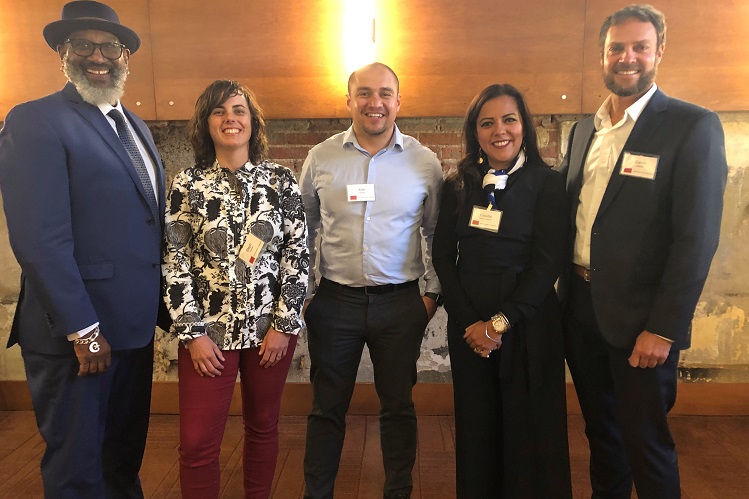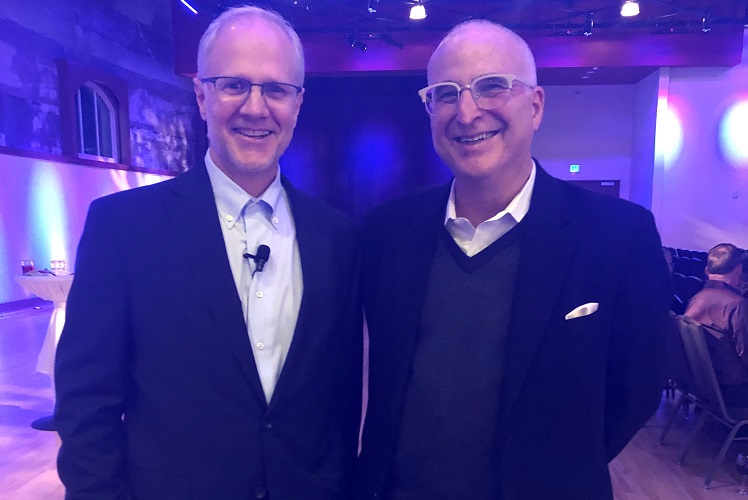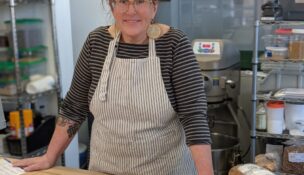This Denver Foundation is investing in nonprofit leaders
The Bonfils-Stanton Foundation recently named its 2020 class of Livingston fellows
Ali Longwell //December 5, 2019//


This Denver Foundation is investing in nonprofit leaders
The Bonfils-Stanton Foundation recently named its 2020 class of Livingston fellows
Ali Longwell //December 5, 2019//

The 2020 Bonfils-Stanton Foundation Livingston Fellows. From left to right: Hassan Latif, executive director of Second Chance Center; Stephanie Frances, founder and executive director of Prodigy Ventures; Jose Esparza, executive director of BuCu West Denver; Clauidia Moran-Pichardo, executive director of Museo de las Americas; and David Dadone, executive director and chief curator of the Boulder Museum of Contemporary Art.
Success in business, whether in for-profit, nonprofit or government entities, is all about leadership. This was the founding principal for the Livingston Fellowship Program, a program of Denver nonprofit Bonfils-Stanton Foundation, which was created in tribute to John Livingston, a long-time Trustee, Chairman and later Chairman Emeritus of the Foundation.
The Livingston Fellowship Program was started in 2005 to help propel nonprofit leaders to the next level — both professionally and personally. Each year, the program provides grants of $35,000 to five nonprofit leaders to support and fund the development of themselves and their organizations over a three-year period.
The foundation focuses specifically on nonprofit leadership, because leading these organizations requires creativity and innovation to help serve its mission and purpose.Livingston felt that philanthropic organizations were not doing enough to invest in the success and impactfulness of leaders in this sector.
“Nonprofit leadership was really the impetus for the program,” says Gary Steuer, CEO and president of the Bonfils-Stanton Foundation. “Over the last 15 years, it’s been tweaked, improved and expanded but the core objective still remains the same.”
In November, the program named its most recent fellows: David Dadone, executive director and chief curator of the Boulder Museum of Contemporary Art; Jose Esparza, executive director of the West Community Economic Development Corp (BuCu West) Denver; Stephanie Frances, founder and executive director of Prodigy Ventures; Hassan Latif, executive director of the Second Chance Center; and Claudia Moran-Pichardo, executive director of Museo de las Americas.
According to Steuer, this class is a “great representation” of the program’s efforts to “dig more deeply into the community and identify people who are extraordinary leaders, who might not otherwise have been on our radar.”
In the past, a small group of nominators from the foundation selected the fellows, but over the years, in an effort to identify lesser-known leaders of community-based institutions the foundation opened up the program for nominations from anyone. The nominations are then evaluated by a peer panel of community leaders and narrowed into 12 to 15 finalists. The finalists are then invited to apply (95% of the finalists typically accept, Steuer says) and are then interviewed by the foundation and narrowed down to the final 5 fellows selected for the program.
Steuer has also noticed in recent years, including in this class, the emergence of social enterprise as a model for nonprofits. In this year’s class of fellows, Prodigy Ventures and BuCu West both operate subsidiary businesses as part of their mission.

Gary Steuer (right), Bonfils-Stanton Foundation CEO and president, with Celebration of Leadership keynote speaker and president of The Heinz Endowments, Grant Oliphant (left) at this year's Celebration of Leadership event.
The Livingston Fellowship Program
What differentiates this leadership program from others in the state is two things: its focus on nonprofits and the program is entirely customized. According to Steuer, most leadership programs are curriculum based or they focus on mid-career of early-career leaders, whereas the Livingston program focuses on individuals who are already established leaders.
Once selected, the fellows undergo a process of self-assessment, which is usually done in coordination with the fellow’s board and staff, to identify the things they need to work on as a leader. With this information, the fellows create strategic plans for themselves for the next three years.
These plans are incredibly diverse and what the fellow’s decide to do in the program really differs on what they are trying to achieve. These can be traditional leadership development actions or unique actions suited to their needs or the needs of their organization. Steuer says that sometimes this includes actions to make sure the fellow is striking a healthy work-life balance.
Past fellow have searched outside of traditional leadership training to inspire unique changes in their organizations. For example, Mike Yankovich, the CEO and president of the Children’s Museum of Denver, wanted to develop a deeper understanding of play. So, with the grant money, he transformed a minivan into a giant toaster and drove it through the west to meet and learn from other communities and organizations about the notion of play. In turn, this experience inspired the museum’s rebuild and led to the development of a program at the Museum where they consult with other institutions on exhibition design and interactive experiences for kids.
Rob Smith, executive director of Rocky Mountain Microfinance, decided he was too immersed in his work and didn’t have enough time to think. So, Smith planned a cross-country bike trip for three months, where he visited other micro-enterprise and microfinance organizations. When he returned, according to Steuer, he was recharged and had a wealth of ideas on how to improve the organization.
Throughout the course of the program, the fellows have a large network to help them achieve their goals. This includes their immediate class of fellows, who regularly meet during the program, the greater cohort of fellows, which is now 75 fellows (only five of which have left Colorado), and a number of community leaders involved in the foundation.
“I think one of the things that the program has done is fostered, among all the fellows, this kind of esprit de corps and this peer network, so they know they can rely on each other,” Steuer says. “It also has created this intersectional connectivity. They have this very, very broad network, that’s in lots of different aspects of the nonprofit sector.”


























